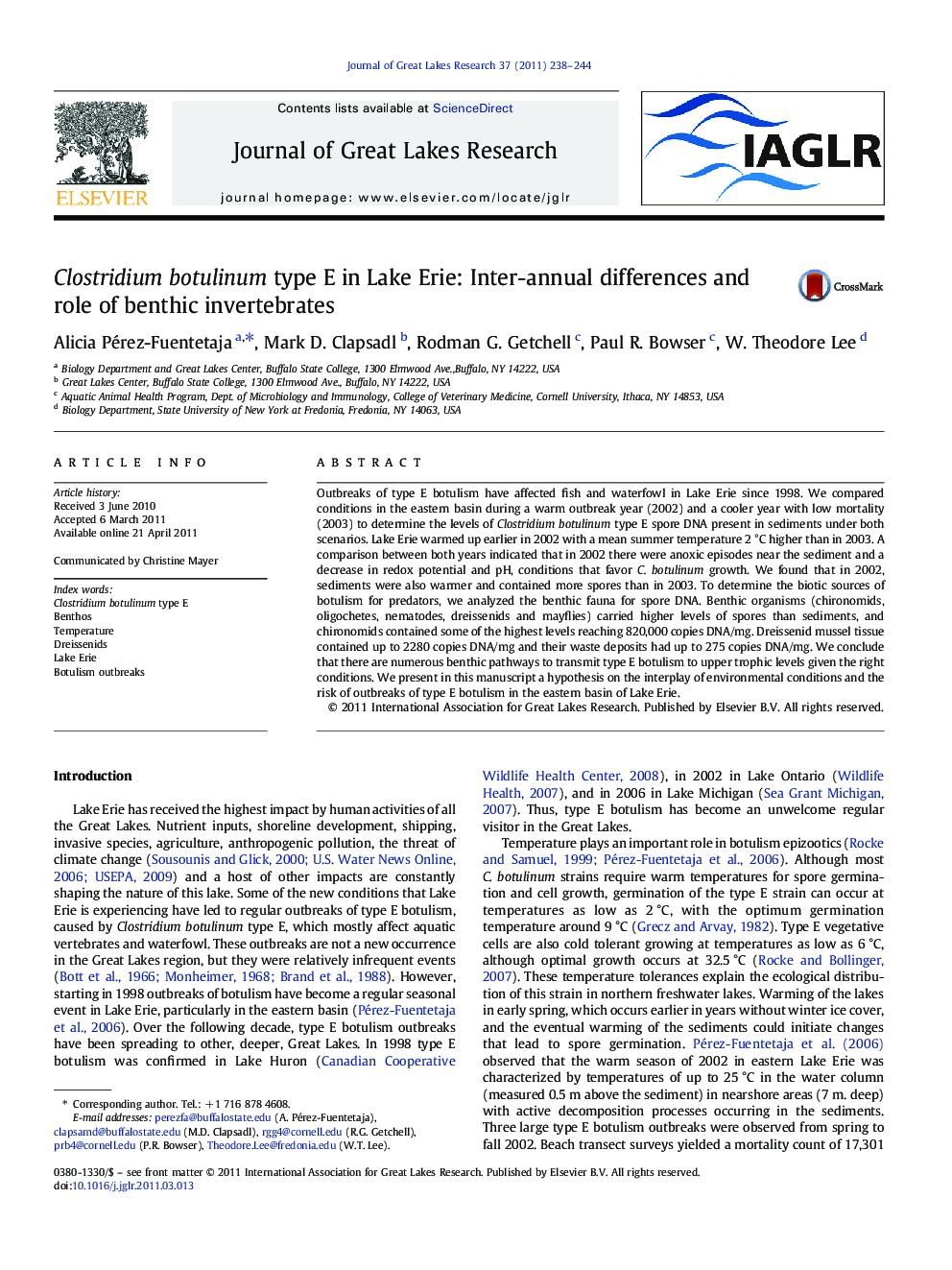| کد مقاله | کد نشریه | سال انتشار | مقاله انگلیسی | نسخه تمام متن |
|---|---|---|---|---|
| 4398919 | 1306710 | 2011 | 7 صفحه PDF | دانلود رایگان |

Outbreaks of type E botulism have affected fish and waterfowl in Lake Erie since 1998. We compared conditions in the eastern basin during a warm outbreak year (2002) and a cooler year with low mortality (2003) to determine the levels of Clostridium botulinum type E spore DNA present in sediments under both scenarios. Lake Erie warmed up earlier in 2002 with a mean summer temperature 2 °C higher than in 2003. A comparison between both years indicated that in 2002 there were anoxic episodes near the sediment and a decrease in redox potential and pH, conditions that favor C. botulinum growth. We found that in 2002, sediments were also warmer and contained more spores than in 2003. To determine the biotic sources of botulism for predators, we analyzed the benthic fauna for spore DNA. Benthic organisms (chironomids, oligochetes, nematodes, dreissenids and mayflies) carried higher levels of spores than sediments, and chironomids contained some of the highest levels reaching 820,000 copies DNA/mg. Dreissenid mussel tissue contained up to 2280 copies DNA/mg and their waste deposits had up to 275 copies DNA/mg. We conclude that there are numerous benthic pathways to transmit type E botulism to upper trophic levels given the right conditions. We present in this manuscript a hypothesis on the interplay of environmental conditions and the risk of outbreaks of type E botulism in the eastern basin of Lake Erie.
Graphical AbstractFigure optionsDownload as PowerPoint slideResearch Highlights
► Clostridium botulinum type E spores are present in sediments and benthic organisms in years with different intensity of botulism outbreaks in the eastern basin of Lake Erie.
► We found that the sediment load of spores was higher during a botulism outbreak year.
► Benthic organisms carried higher levels of spores than the background levels and could be an important pathway of transmission.
► Temperature is an important driving factor in the potential for outbreaks to occur, as sediment processes that favor bacterial proliferation are intensified.
Journal: Journal of Great Lakes Research - Volume 37, Issue 2, June 2011, Pages 238–244